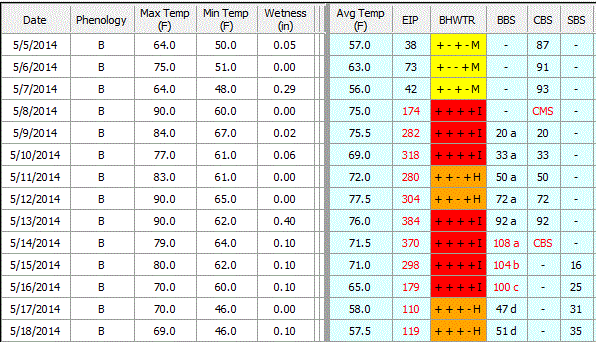 |
| Early quince rust symptoms. Photo by Allen Cochran May 19, 2014 |
Powdery mildew: We have had 27 dry weather “mildew infection days” since spores first became available Apr 9. With good soil moisture and warmer temperatures, expect continued susceptibility of new growth for some time.
Fire blight: Predicted risk remains at an infective level wherever bloom remains and wetting occurs. Pay particular attention to newly planted trees which may have susceptible blossoms.









